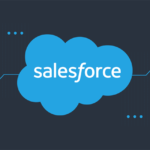The industry-to-information era is coming to an end. Now is the time for automation of tasks for better growth in the organisation. This is majorly done and achieved with an HRMS tool or software.
That’s why companies must know the top features that should be present in an HRMS software. Then, after reading and researching these, they can easily customise a fully personalised HRMS like uKnowva.
The 7 Features That Should Be Present In An HRMS Software Are:
Virtual biometric system:
The employee now works from anywhere and at any hour. As a result, companies are allowing greater flexibility to their workforce. But that makes tracking their attendance difficult without the presence of a virtual biometric system.
However, HRMS software features must include this one. Employees can register their attendance using the virtual biometric system within a click or two. They don’t waste extended minutes on the check.
The virtual biometric system should be so innovative that it catches the location already registered or recognised by the device. Then, employees would not be required to check their live location extensively.
Wellbeing score tracker:
It’s important in the HRMS software for organisations like uKnowva to track employees’ happiness and wellness scores. Because work today has become more complex and demanding – even with flexible hours or at remote locations.
Employees might feel lonely or disconnected when they are responsible for achieving their goals without extensive help from the team. That’s also because team members are busy executing their deliverables to push the team’s growth forward.
In this case, HRMS software must track how happy the employee is. It signals the HRs and team leaders on the happiness factor of the particular employee.
From there on, HRs and team leaders must readjust the assignment of the targets to employees who feel sad or overburdened.
However, employees who love their KPIs and are consistently happy means they love to take on new challenges. Therefore, they would be better managers and handlers of complex projects with tight deadlines.
Recruitment engine:
The recruitment engine is amongst the top features that should be present in an HRMS software. The recruitment engine makes pre-onboarding activities like posting job offers, finding fresh talent, sending out offer letters, and tracking the application status easy.
Then the onboarding tasks like changing their application from offer letter to accepted or other categories. Scheduling their final interview rounds and aptitude tests, and similar are also part of both pre-onboarding and onboarding.
Then, there are tasks like confirming the interview, joining date, offer letter acceptance, welcoming the new joinee in the organisation, and conducting their orientation.
Activities like these should be streamlined with the help of the recruitment engine.
Insights from recruitment engine:
The HRMS software must generate insights from the data stored in the recruitment engine. These insights and analytics only help HRs to smoothen and improve their recruitment processes from time and again.
The HRs would know answers to queries like:
- How efficient is a recruitment channel?
- How often is the employee sticking around in the company for a year or more using a particular recruitment channel?
- How many top-performers are hired from a recruitment source or channel?
- What is the cost of hiring coming about for the company from an online recruitment channel or source?
- How often is the job offer being posted?
- How many candidates complete the job application process, and how many are getting selected with a final offer letter?
- Which recruitment channel is least used or is very costly or is not helpful for the company to get the right hire?
Additionally, the HRMS software examples must also be clear to the company. As there are many HRMS software online.
So, the comparison must be drawn carefully amongst these examples to see and verify which HRMS suits the firm and their goals the best.
Payroll & expenses:
Payroll & expenses are one of the core HR features that should be present in an HRMS software. Without payroll and expenses calculation and automation, the HRMS tool can be a drawback to the company.
Within payroll & expenses, an HRMS suite or tool can provide features like:
- Automated generation of salary slip
- Calculation of daily, weekly, monthly, and yearly expenditure on all core tasks.
- Integration of salary compensation calculation with the employee’s data.
- Integration of the salary generation with attendance, timesheet, and hours invested in projects.
- Automated generation of PF, gratuity, and other documents for employees depending on their profile information.
- Smooth and encrypted transfer of salaries to bank accounts with NEFT, MPS, and other transactional ways.
When features like these are available in the HRMS for organisations, generating salaries on time for employees is easily possible. In addition, employees can also check their salary generation from the HRMS system without depending on HR extensively.
For any query in the salary slip, they connect with the HR online within minutes without having to drop them an email. The entire process saves work hours and efforts from both HR and employees.
Anywhere accessibility:
Employees in modern industries crave more flexibility and mobility. This also applies to the contemporary world’s tomorrow-ready HRMS. This way, employees can enjoy the flexibility of working alone and at odd locations or hours.
They can log into the HRMS software from anywhere at any hour. Their attendance would be marked on the spot as they punch in the virtual biometric system of the HRMS.
And anywhere accessibility allows the workforce to work at their pace and according to their work style. This invites more inclusivity and diversity in the company culture.
When that continues, employees feel they have complete control over their work and KPIs. They can learn to manage their work-life style using the accessibility feature of the HRMS.
Self-reliance and self-serving options:
Features that should be present in an HRMS software to suit today and tomorrow’s workforce include self-serving options. It means employees should be as minimum as possible dependent on HR to carry out their mundane tasks.
There should be add-ons to automate their lengthy and irritating but necessary daily tasks. Otherwise, the UI of the HRMS must be clear with large or visible CTA options.
Then, employees would know answers to queries like:
- Where to set their goals?
- How to generate salary slips?
- Where to chat with their team members, colleagues, or TLs without depending on emails?
- How to excess social intranet features? And
- How to clock in their project hours?
Conclusion:
An HRMS for organisations is the need for the rapidly growing industries tech tools for automation are at the centre. That’s why this blog is important to know the top 7 features that should be present in an HRM software.
At least, by the end of this blog, readers will know the fundamentals of an HRMS. And how such a SaaS can help them streamline and automate their employees’ tedious daily tasks.








